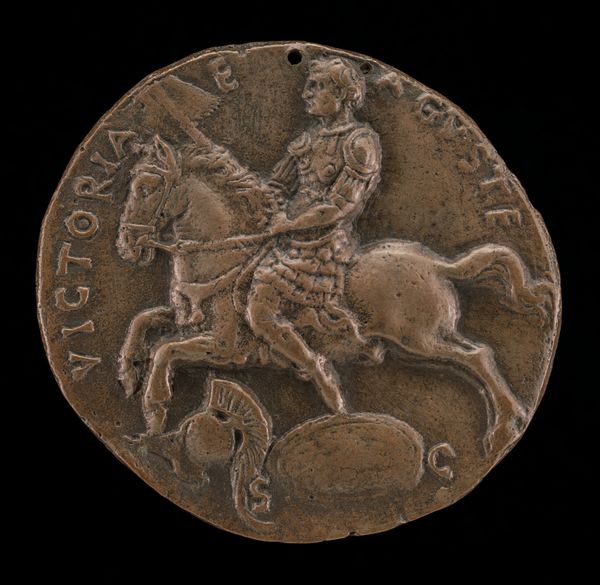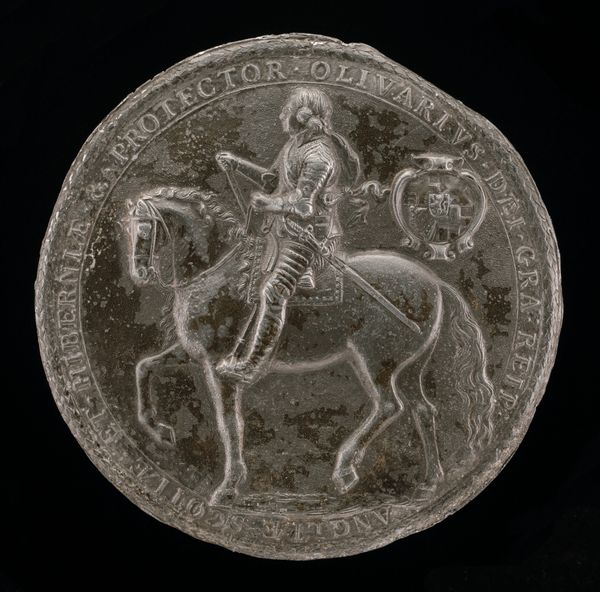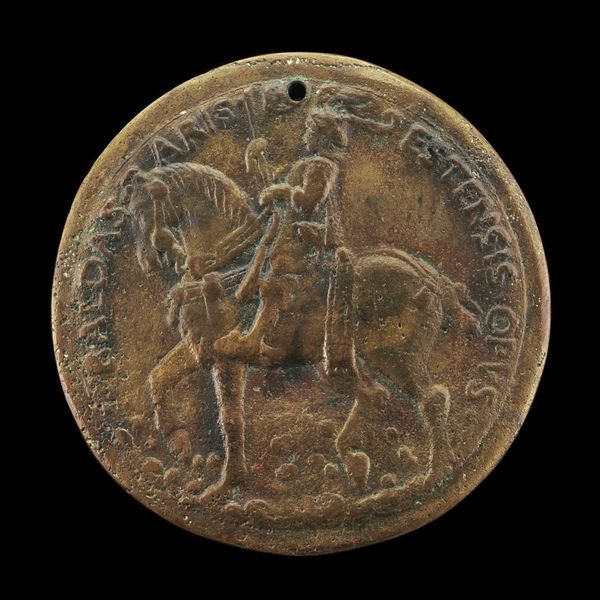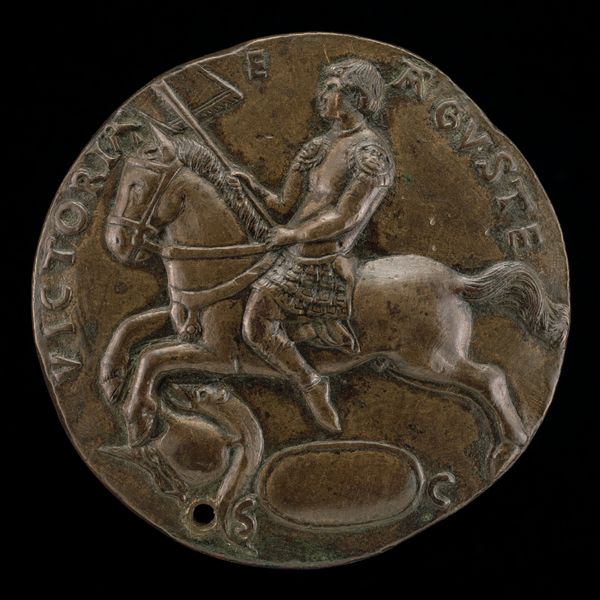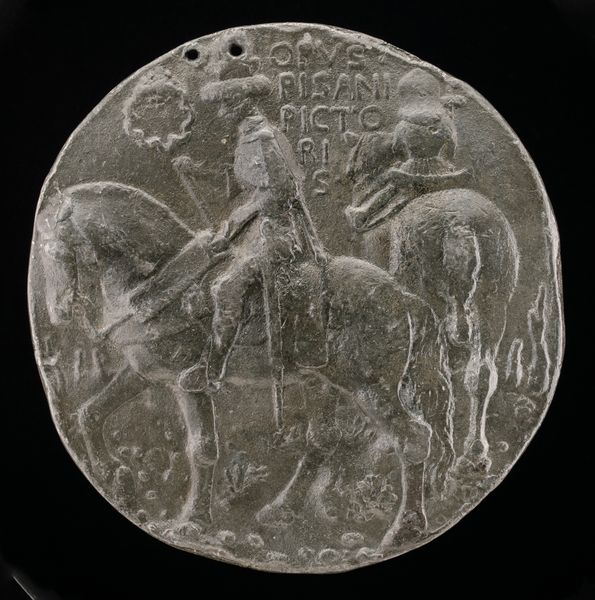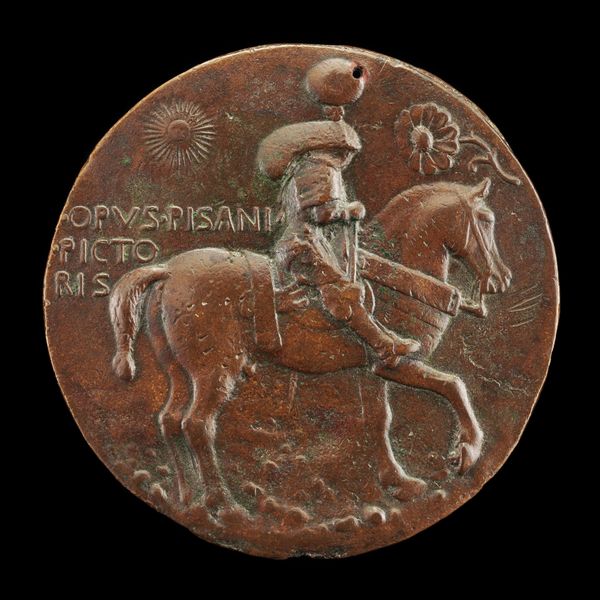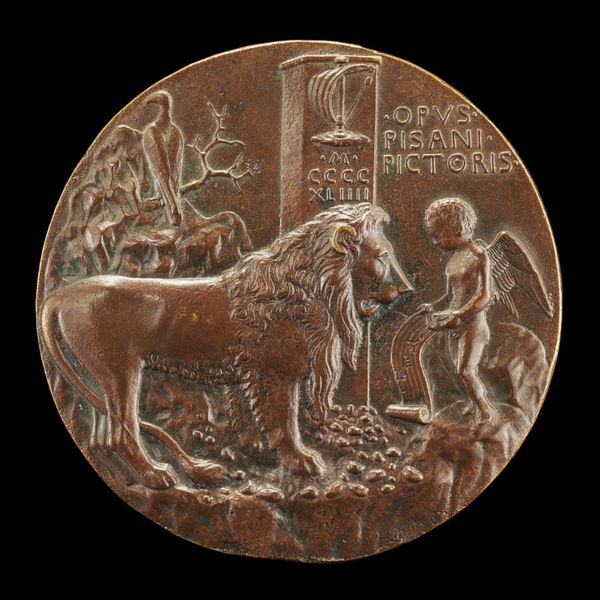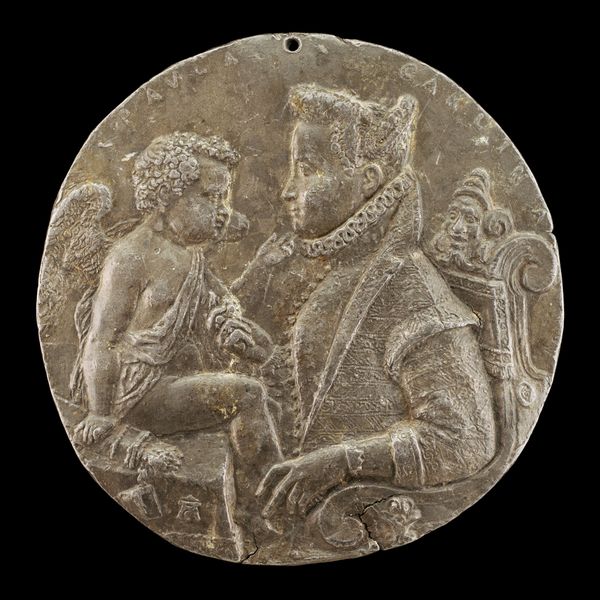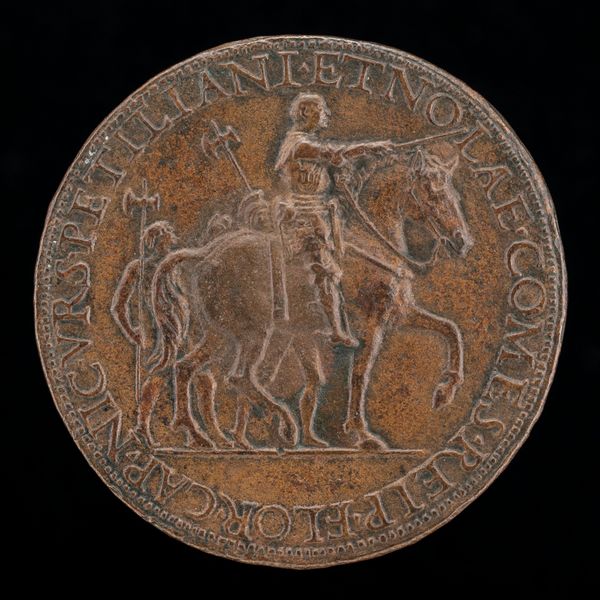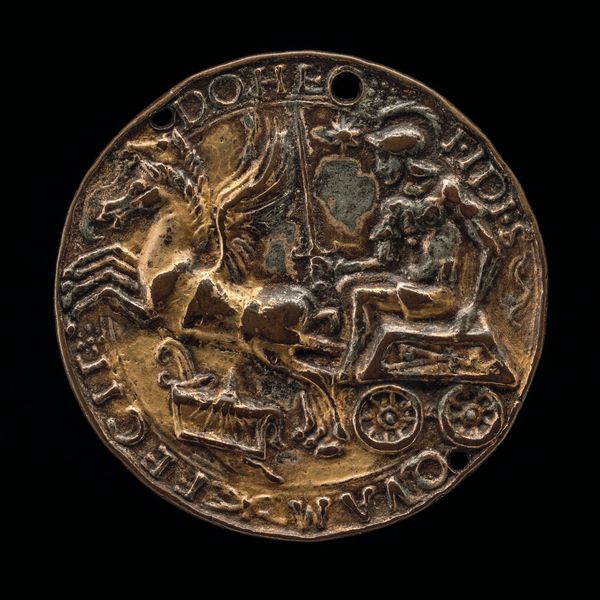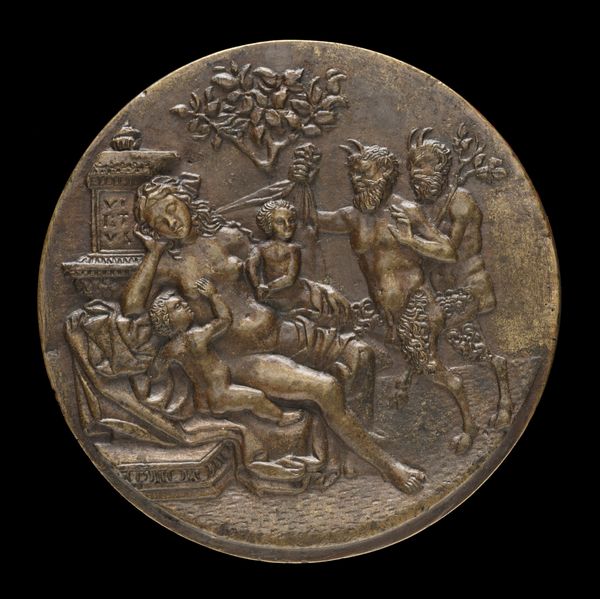![François I on Horseback [reverse] by Anonymous](/_next/image?url=https%3A%2F%2Fd2w8kbdekdi1gv.cloudfront.net%2FeyJidWNrZXQiOiAiYXJ0ZXJhLWltYWdlcy1idWNrZXQiLCAia2V5IjogImFydHdvcmtzL2I1NmUxMGU1LTcxMGEtNDJjNS05NWJjLWQ3YjZiOTk3MjAzZC9iNTZlMTBlNS03MTBhLTQyYzUtOTViYy1kN2I2Yjk5NzIwM2RfZnVsbC5qcGciLCAiZWRpdHMiOiB7InJlc2l6ZSI6IHsid2lkdGgiOiAxOTIwLCAiaGVpZ2h0IjogMTkyMCwgImZpdCI6ICJpbnNpZGUifX19&w=3840&q=75)
bronze, sculpture
#
portrait
#
medal
#
medieval
#
sculpture
#
bronze
#
sculpture
#
history-painting
Dimensions: overall (diameter): 9.11 cm (3 9/16 in.) gross weight: 137.18 gr (0.302 lb.) axis: 12:00
Copyright: National Gallery of Art: CC0 1.0
Curator: Well, this bronze medal from the early 16th century depicts François I on horseback, or rather the reverse of such a depiction. What's your initial impression? Editor: It’s… weathered. The low relief and the bronze create a worn, almost softened appearance. It feels tactile, humble even for something portraying a king. Curator: It is indeed striking how the material and process inform its reception. Bronze casting was a significant industry, and medals like these served as portable, reproducible images of power. Its creation speaks to skilled labour and the controlled consumption of materials to promote a certain image. Editor: Absolutely. The portrait's reproduction as a medal also raises fascinating questions about the use of imagery for shaping public perception and cementing power. It shows François not just as a king but as a powerful military leader, drawing on a rich tradition of equestrian portraiture. This object performed a very specific cultural function. Curator: Precisely, we need to think about the workshop. Where was this object meant to be seen? By whom? The context of consumption shapes meaning, of course. Editor: And how! It's intriguing to imagine how people in different social strata would have received this image. For the elites, it may have reinforced existing notions of kingship. For the less privileged, it might have been one of the few direct visual representations of their ruler. Curator: It's easy to overlook these smaller art forms when thinking about royal portraiture, focusing instead on the grand oil paintings, yet pieces like this played such an important role in disseminating political imagery. The medals themselves, beyond the artistry and casting, carry social and political currency. Editor: I agree completely. Focusing on objects like these expands our understanding of the mechanisms of power and representation. It's not just about François I himself, but about how his image was constructed and circulated, using accessible means and technologies to ensure widespread visibility. It also speaks to the nature of rulership in the early modern period. It makes us think, what materials are available now for those that are striving to be known and how are those in power manipulating image now? Curator: Indeed, it pulls art history into a realm of materiality and function beyond pure aesthetics. Editor: Well, that bronze surface really gets you thinking. Thanks for shedding light on this medal. Curator: My pleasure. I'll never see portraiture the same way again.
Comments
No comments
Be the first to comment and join the conversation on the ultimate creative platform.
